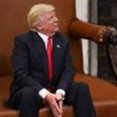US Economic Perception vs. Reality: How Government Data Misled Voters
-
Recently Browsing 0 members
- No registered users viewing this page.
-
Topics
-
Popular Contributors
-
Latest posts...
-
-
15
News of George Floyd’s victim might get a pardon, creates shock waves…
“News of George Floyd’s victim” …. which one, there were many victims of this violent serial criminal -
50
Crime Ukrainian Arrested at Phuket Airport Over Condominium Vandalism
I usually proceed on the assumption that, once I pay a deposit on a condo rental, I'll never see that money again. I've never had that happen, but I assume it will. I negotiate the agreed rental price bases on the assumption that they'll keep the deposit. Whatever happens, that's fine with me. It's not worth arguing about. -
18
Changing from a non o based on retirement to non o based on marriage
How did that switch from retirement-based EOS to marriage-based go? -
99
Crime British Teen Thought as Missing in Thailand Found Arrested in Georgia
Was in The Sun UK this morning as far as I remember. -
6
Opinion Unpacking Thailand’s Beauty Ideals: A Call for Diversity and Inclusion
We didn't get enough of that DEI crap in the West so now we have to get it in Thailand??? Gimme a break.
-
-
Popular in The Pub
-






.thumb.jpeg.d2d19a66404642fd9ff62d6262fd153e.jpeg)



Recommended Posts
Create an account or sign in to comment
You need to be a member in order to leave a comment
Create an account
Sign up for a new account in our community. It's easy!
Register a new accountSign in
Already have an account? Sign in here.
Sign In Now